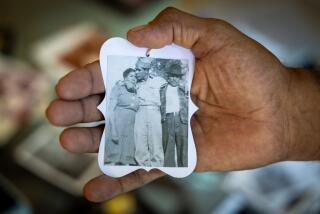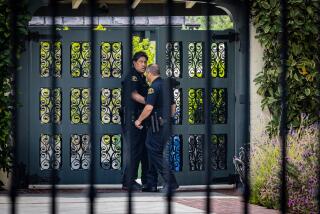A Letter From the Home Front
FRESNO â Maybe it is as written. Maybe you canât go home again. An alternative view is that you never truly leave. Though I moved away 20 years ago, this overgrown farm town still seems like home to me. I still keep watch on its changes and controversies--the news of Fresno, if you will--and also on certain people and places I knew as a boy. I still feel . . . connected.
While I get needled sometimes for writing too many columns from here, I find Fresno a difficult dateline to resist. Here, it is easier for me to make sense of complicated issues at play across the state--shifting water politics, say, or the consequences of unfettered growth. Itâs one thing to debate urban sprawl, but another to be able to track it in a tangible way, block by familiar block. Here, I can appreciate whatâs been gained by Fresnoâs push north, the finer, safer developments where my parents now live. Here, too, I can see clearly what has been lost, the once proud neighborhoods left behind.
The issue that draws me back this time is crime. Fresno hardly holds the franchise on bloodletting in California, but it has not been cheated either. The week began with something like 27 corpses stacked up in the county morgue, a record. Seven were produced in an attack early Sunday morning on a cantina at the eastern border of town. The mass murder, still unsolved, led most national news reports Sunday night, and left the town reeling.
âJust when you started thinking it couldnât get any worse,â observed Eli Setencich, a friend who writes a column for the Fresno Bee, âit got terribly worse. Mass murder, the networks called it. Execution-style, early reports said. The worst in Fresno history, the police agreed. And the whole world heard about the Raisin Capital of the World.â
*
The killings took place in a part of town where I spent a good part of my boyhood, my Wonder Years. So this one struck particularly close to home--or at least what used to be home. And as I said, Iâm not sure thereâs much of a difference.
Itâs funny what sticks with you. I can still remember specific dogfights and horse spills and the names of most of my boyhood friends. I can remember the night our next-door neighbor fired his shotgun at the car of a fleeing burglar. I can remember riding my bike to a huge fire that consumed an entire lumberyard in minutes. And I can remember hearing as the sirens called one foggy night to a wrenching, lethal car wreck on Kings Canyon Road, the nearest main street, and how as our parents returned from the accident they wouldnât talk much about it.
We lived in a big pink house surrounded by plums and grapes. The first thing I did Monday was drive to the old house. It is now white. The vineyards are gone and the plum orchard is a brick house. The fruit had belonged to the Mochizukis, a family that lived across the street and operated a thriving fruit stand. The stand was open Monday, but all they were selling were blackberries.
I asked Masako Mochizuki what happened to the grapes and plums. âWe tore them all out,â she said. âWeâre getting old. Too much trouble.â I asked about her son, a playmate. Heâs a doctor now, in San Carlos. And who lives in our old house? She didnât know: âSo many have come and gone.â
She conceded that the neighborhoodâs âbeen going down a little. The older ones move away to condos or the north end of town. And the younger ones donât stay. So it changes, you know.â I asked about the shootings. She could remember when Carilloâs Club was a country market. The bar, she said, âhas been trouble from the start.â I asked if it frightened her, the Sunday bloodshed. She shrugged.
âThings change, you know,â was all she had to say about it.
*
This is one time my Fresno-as-laboratory model broke down. I left the old neighborhood with no greater comprehension of Californiaâs pox of violence. It seems clear that none of the proposed remedies--tougher sentences, more prisons, gun control, tighter borders, and all the rest--has a prayer of actually working. Most of it is just politics, meaningless motion, wind. But that less-than-startling insight hardly required seven new corpses.
I left Carilloâs Club with only questions. One of the questions was this. In the middle of the afternoon, a big yellow school bus had pulled past the murder site. This was the first bus of the day, taking home the youngest children. All I could see was the tops of a dozen heads and a dozen pairs of eyes peering out the bus windows. The heads were tiny, the eyes big. I wondered how deeply this moment would be ingrained in their memories of Fresno childhood. I wondered what would stick.
More to Read
Sign up for Essential California
The most important California stories and recommendations in your inbox every morning.
You may occasionally receive promotional content from the Los Angeles Times.











